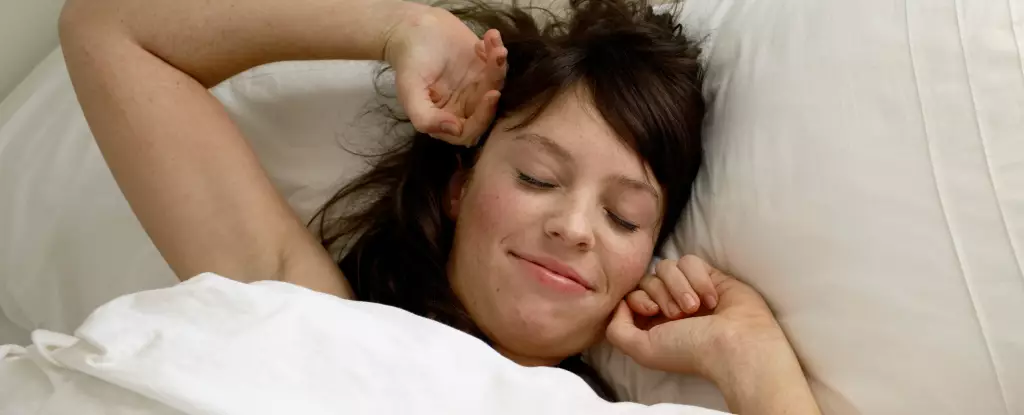Throughout history, the relationship between sleep and creativity has piqued interest among philosophers, scientists, and artists. John Steinbeck famously stated that sleep serves as a “committee” that helps solve the problems of the waking mind. Modern scientific studies have begun to support this poetic observation by revealing how sleep influences our cognitive processes, particularly in decision-making and problem-solving scenarios. Recent research in 2024 indicates that sleep can enhance our ability to make reasoned choices, free from the initial biases that can cloud our judgment when we are fully alert.
In a notable experiment conducted by Duke University, participants engaged in a simulated garage sale, where they had to sift through virtual boxes containing a mix of trivial and valuable items. Initial decisions were often influenced by first impressions, with participants favoring boxes based on the early items they encountered rather than a comprehensive evaluation of all available options. However, when decisions were deferred until the following day after a night of sleep, participants demonstrated a more strategic approach, focusing on the overall benefit rather than allowing initial discoveries to dictate their choices. This underscores how our cognitive landscape shifts in the restful embrace of slumber.
The role of sleep in enhancing problem-solving capacities was further explored in a 2019 study, where researchers discovered the concept of “sleep cues.” Participants worked on complex puzzles while specific sound cues were played in the background. After a night of sleep, these sound cues were replayed, leading to a marked increase in the participants’ ability to solve previously unsolved puzzles. This suggests that the brain remains actively engaged in problem-solving, even in sleep, capitalizing on sound cues that evoke associations with the unsolved challenges.
This phenomenon speaks to the idea that sleep can act as a cleansing tool, allowing us to form new connections — linking disparate pieces of information gathered during our waking hours. A 2023 study further delved into this concept, demonstrating that sleep can illuminate hidden relationships among seemingly unrelated objects and events. Participants exposed to a series of associations performed better in recognizing indirect links after rest. The implications of these findings extend beyond mere academic curiosity; they point to the unfolding potential of sleep as a vital asset in cognitive enhancement.
Napping as a Catalyst for Creativity
The importance of naps as a creative tool is exemplified in the practices of historical figures like Thomas Edison. Edison’s unique method involved napping with a ball in his hand, fostering a delicate balance between wakefulness and sleep, which he believed sparked moments of creativity. His experience connects with contemporary scientific investigations that have tested the effects of light sleep on problem-solving abilities.
In a recent experiment structured similarly to Edison’s method, participants were tasked with a math problem containing an underlying rule for efficient solutions. Those who entered a light sleep, dropping their cups in the process, demonstrated superior insight into the problem compared to those who remained awake or fell into deeper sleep cycles. This aligns with reports of hypnagogia, a state rich in dream-like imagery that surfaces during the transition from wakefulness to sleep, proving to be an optimal moment for creative breakthroughs.
Real-world applications of this research could be transformative. For creators, artists, and innovators, understanding the correlation between sleep and enhanced cognitive function may lead to practical strategies that harness the power of rest in pursuing complex tasks. Techniques such as brief napping or orchestrated sleep environments could become essential tools for professionals seeking to leverage the subconscious mind’s potential.
Further studies, such as those conducted in 2023 that relate the themes of hypnagogia to creative tasks performed before sleep, highlight the specific imagery that may enhance problem-solving capabilities. Participants who listed creative uses for trees before sleeping reported finding trees re-emerging in their hypnagogic imagery, subtly guiding their creative process. This finding reinforces the notion that our subconscious is intricately tied to our conscious pursuits, echoing the sentiments expressed by legendary innovators throughout history.
As modern society often scoffs at the necessity of sleep, findings from contemporary science shine a light on its invaluable role in our cognitive lives. The interplay between sleep, creativity, and problem-solving challenges us to reassess the ways we approach rest — not merely as a necessity for restoration but as a crucial element of mental acuity. In an age where complex problems demand innovative solutions, embracing the contributions of sleep could very well be the key to unlocking our fullest potential. By allowing our minds to drift into the realm of dreams, we may discover the answers we seek, proving Steinbeck’s sentiment more relevant than ever.

